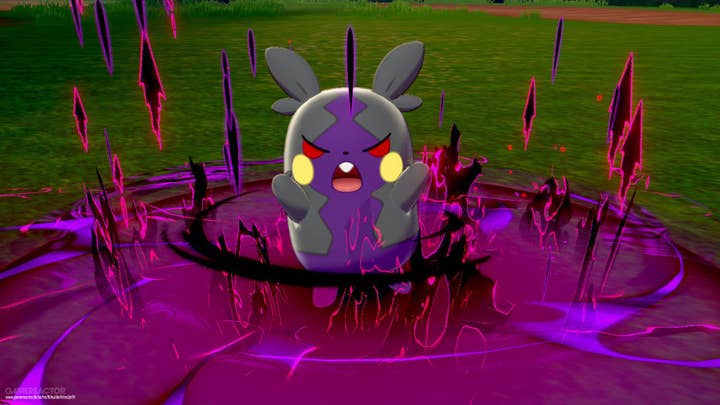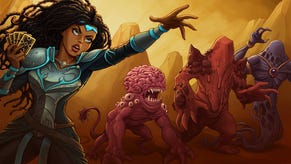Storm in a Pokéball | Opinion
The vocal complaints from some Pokémon fans point to a basic truth about how fragmented the audience for a big franchise can become
In many regards, the problem that developers of Pokémon games face is one that other developers would give their right arm for. They are working on a franchise that has done a remarkable job of holding its audience and its cultural relevance for decades, mixing a slow and careful evolution of the core games with more bold moves in other media and companion games (the most notable, of course, being Pokémon Go) in a way that has effectively retained older players while continually bringing younger players into the fold.
That's a remarkable legacy, but it does create challenges of its own -- not least of them being, with a major series overhaul like Pokémon Sword and Shield, the question of how to ensure the series meets the demands of those very disparate audiences, from adults who first played Pokémon in the '90s to tweens who'll encounter it for the first time with this game.
"All those people who have played Pokémon games since the '90s have grown up and gone in different directions in terms of their tastes"
What makes this particularly tricky is that we're not talking about a binary split in the audience between adults and kids. That rather misleading over-simplification has done the rounds over the past week, as a small but vocal group of adult fans have taken issue with a number of perceived issues with the new games, from complaints about graphical fidelity to annoyance at the decision to prune back the increasingly long list of creatures which has grown with each game in the series to date. These supposed flaws and others are occasionally blamed upon, or explained away by, the primary focus of the series being children -- with Nintendo and developer Game Freak thus deprioritising things that the adult audience finds important.
That's not entirely the case, though, because the reality is that the "adult audience" for a game like this is not one monolithic group. The real complexity, and challenge, lies in the fact that there are many different and diverse audiences encompassed in that simplistic term, because all those people who have played Pokémon games since the '90s have grown up and gone in quite different directions in terms of their tastes, preferences and gaming habits.
Some of them, perhaps even most, are fairly casually engaged with games overall, don't play many console games and will buy a new Pokémon title for a nostalgia hit - or perhaps even to introduce their own kids to the franchise. Some are just core fans of the franchise who buy each installment and make it a key part of their gaming identity; and others still have migrated into 'core' gaming (with all that entails) while still wanting to engage with Pokémon for nostalgia, or to revisit the formative role it played in their interests. There's a wide and varied spectrum between all of those points, with many players falling in every imaginable position along it.
"Including a ton of obscure Pokémon from older games is a lot easier when they're represented by a handful of sprites"
How do you please all those audiences at once? Well, you don't -- not without expending vast resources on aspects of a game that really only matter to a tiny proportion of your customers, at least. The move into home-console quality with Sword and Shield brought this to a head, because it increases costs across the board. Including a ton of obscure Pokémon from older games is a lot easier when they're represented by a handful of sprites, and gets more and more costly as you move to 3D and increase the quality of those 3D models and animations.
Graphical quality (beyond actual bugs, which have also been highlighted by some more reasonable critics) is another area where choices about where to allocate resources are tough, not just because of different audience expectations (and straight-up levels of caring about certain types of fidelity), but also because as a Switch game, many people will play on a much smaller screen where effort expended on minor detail will be entirely wasted.
Even more tricky is what to do with difficulty settings and potential shortcuts in the game; there seems to be an understanding among vociferous adult Pokémon fans that the games have been dumbed down and filled with shortcuts to appeal to children, which is precisely the opposite of what's actually true -- any such changes are actually there to allow the games to be played by time-poor (and often attention-stretched) adults.

This isn't to say that Nintendo got everything right with Pokémon Sword and Shield -- it's a flawed game in quite a few ways, naturally enough -- but by and large they seem to have hit their marks in terms of creating something that's seriously enjoyable for children and for a reasonable swathe of the adult audience. The problem is that the one segment of the adult audience who just weren't worth catering to -- because their numbers are too few and the things they care about are too costly -- is extremely online, very noisy and not great at tempering their reactions to things.
"It doesn't take many voices echoing in an enclosed space to convince people that they're an ill-treated majority"
(It says rather a lot that Game Freak has been targeted for outright threats in response to this storm in a Pokéball -- there's a segment of the market whose response to sitting on their own balls is to send a furious death threat to the manufacturer of their chair, and gods if we aren't all pretty sick of them after the past few years.)
Yet of course, neither Nintendo nor Game Freak can actually say this. Suggesting that you have prioritised any part of your audience over another is nowadays considered outright traitorous, no matter how good your reasons may be or how unreasonable their demands were. Ironically, therefore, it's actually better and easier to cope with a "Nintendo/Game Freak screwed up" narrative than it is to squarely confront the truth, which is that the things causing most consternation are almost all things that were surplus to requirements for the vast majority of the potential audience for the game -- and that the people feeling that consternation simply aren't representative of the audience in remotely the way they imagine themselves to be.
This is the crux, and it's not just a point worth making about Pokémon, or even about Nintendo as a whole. Every franchise that lasts a long time has a need to handle this balancing act -- bringing in new, younger players to keep things refreshed, holding on to older players and figuring out which of the many groups their older fans have split off into are worth catering to in the process.
Along the way, some people are going to be disappointed -- and that disappointment can turn toxic if those people have convinced themselves that they are the True, Real Fans who are being ignored and downtrodden by the developer and publisher, rather than accepting the reality that they're a niche audience who have by their own volition moved well outside the actual sphere that the franchise is trying to address. This delusion is one that's pretty damn easy for online communities to fool themselves into; it doesn't take very many voices echoing in an enclosed space to convince people that they're an ill-treated majority.
As franchises grow ever longer in the tooth -- how many of the games we play now started life in the '90s? -- the careful management of these fragmented audiences is only going to get harder, and learning to ignore some of the loudest voices will be a key lesson for many creators.









